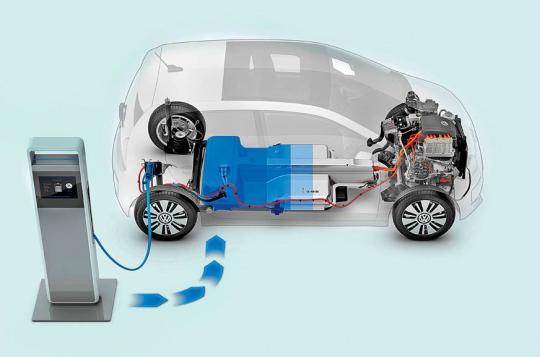
Indian Scientists Develop Battery Technology To Make EVs With 1600 km Battery Range
"Indian Scientists Develop Battery Technology To Make EVs With 1600 km Battery Range."
According to the research team, this tech could revolutionise the existing multi-billion dollar industries including Electric vehicles, consumer electronics, drone and other products that depend on the usage of a Lithium-Ion battery.
Indian scientists are working on next-gen battery technology to make EVs super-efficient. A joint research team from IIT Bombay and Shiv Nadar University is working on new Lithium battery cells. Researchers claim that the Lithium battery they are working on will have three times more energy density than the conventional Li-ion battery. If the claims of these scientists are valid, then it can revolutionize the electric vehicle industry.

These new battery cells are based on Lithium-Sulphur (Li-S) chemistry. Not only this, but the Li-S batteries will also be cheaper than the current Li-ion batteries. Besides, the technology developed by scientists would allow the environment-friendly production of these battery cells.
As per the reports, the production of battery cells requires the by-products of petroleum along with agro-waste elements and copolymers such as cardanol and eugenol as cathodic materials. Cardanol is nothing but simply the by-product of cashew nut processing, whereas eugenol is the clove oil.
So basically this technology uses bio-molecules in the form of cathodes for Li-S battery cells. Though this might be a new concept, it promises some great results. If your energy density has increased by three times then it simply means more range for your electric cars.
Bimlesh Lochab, Associate Professor at Shiv Nadar University told PTI, “The capability of three times more energy density, coupled with being a significantly safer technology, holds the promise of accelerating the adoption of clean, battery-led energy across multiple domains.”
Professor Lochab explained by giving an example of a car. He said a car with a 400 km range can travel 1600 km on a single charge with this battery technology.
Cars like Tesla depend on Lithium-Ion battery technology so for the future of electrification this could be an important invention.
The new battery technology synthesises a bio-based molecule, capable of commercial-scale production. The research includes a new type of cathode for Li-S batteries, which can help push the promising battery technology to higher performance levels.
Also Read:
NEW UPCOMING BIKES IN NEPAL 2020 | SPECS, PRICE EXPECTATION
ELECTRIC VEHICLES | CARS | BIKES: ADVANTAGES AND DISADVANTAGES
GENIUS ELECTRIC MOTORCYCLES AND TAILG ELECTRIC SCOOTERS LAUNCH IN NEPAL
KTM BIKES IN NEPAL WITH FULL SPECIFICATION AND PRICE
NEW UPCOMING ELECTRIC CARS IN NEPAL 2020 | PRICE, SPECS
HOW FEASIBLE ARE ELECTRIC VEHICLES IN NEPAL?













